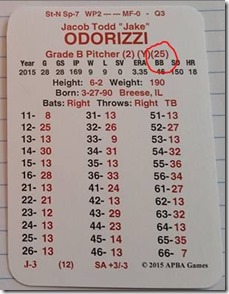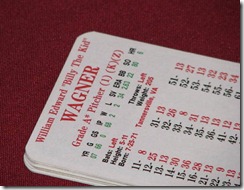


Double plays gently decline as there are fewer runners to double off in the higher grades. Home runs stay relatively constant until a slight descent in the 20s, strikeouts stay relatively constant until the 9 into a 13 kicks in at the A level (grades 18 and above). We see the same effects with hits and doubles, although hits stops its descent later, but has the same crater and uptick pattern. Looking at that most important stat of runs, we notice that as the grade gets higher, the amount of difference lessens a little bit, and then craters, and actually goes up a little bit at the end. Here is a comparison of a few of the stats for each simulation:

First up I simply ran a 5-season simulation on every grade from 1 through 30 with all of the ‘neutral’ subratings: no control, no strikeout and no homerun. Instead of drowning you in numbers, I’m going to go the pretty route and drown you with charts. I then did the same thing, this time concentrating on the pitching grades. Master Game, the latter now has an additional control rating and 4 additional strikeout ratings.Ī while back, I ran a simulation of the various hit numbers. The only ratings that really made a material difference where the homer ratings: 5 additional ratings and approximately 20 effective grades jumped the classes to 1,500. There were no additional control or strikeout subratings, but additional subratings were added for homers, wild pitches, balks, hit by pitch and holding runners.

When the Master Game came into play, the number of grades increased from 6 to 30, with each grade divided into 5 parts. The strikeout subratings were of little overall effect and the A&C and A&B grades rarely came into play. You now had 72 different classes of pitchers, but in reality you really had 12: 4 grades and 3 control subratings. Six years later, the subratings were added: 3 for control and 4 for strikeouts. The grade was pretty much determined by two factors: ERA and innings. When APBA came out in 1951, the concept of the grade was added, so now pitchers fell into six classes: A&C, A&B, A, B, C and D. There were no grades, no subratings, no handicaps. In the original National Pastime game, the only thing that a pitcher contributed was hitting.


 0 kommentar(er)
0 kommentar(er)
